
The Wire is an American crime drama television series created and primarily written by American author and former police reporter David Simon for the cable network HBO. The series premiered on June 2, 2002, and ended on March 9, 2008, comprising 60 episodes over five seasons. The idea for the show started out as a police drama loosely based on the experiences of Simon's writing partner Ed Burns, a former homicide detective and public school teacher.
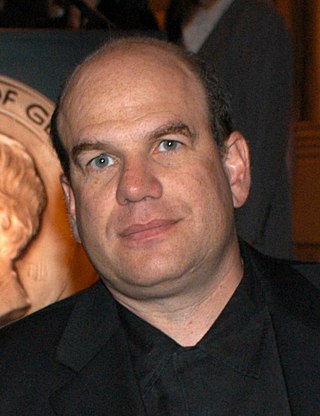
David Judah Simon is an American author, journalist, screenwriter, and producer best known for his work on The Wire (2002–08).

Homicide: A Year on the Killing Streets is a 1991 book written by Baltimore Sun reporter David Simon describing a year spent with detectives from the Baltimore Police Department Homicide Unit. The book received the 1992 Edgar Award in the Best Fact Crime category.
Edward P. Burns is an American screenwriter and television producer. He has worked closely with writing partner David Simon. For HBO, they have collaborated on The Corner,The Wire,Generation Kill, The Plot Against America, and We Own This City. Burns is a former Baltimore police detective for the homicide and narcotics divisions, and a public school teacher. He often draws upon these experiences for his writing.

The Baltimore Police Department (BPD) is the municipal police department of the city of Baltimore, Maryland. Dating back to 1784, the BPD, consisting of 2,935 employees in 2020, is organized into nine districts covering 80.9 square miles (210 km2) of land and 11.1 square miles (29 km2) of waterways. The department is sometimes referred to as the Baltimore City Police Department to distinguish it from the Baltimore County Police Department.

Det. Beauregard Donald 'Beau' Felton is a fictional character on the television drama series Homicide: Life on the Street portrayed by Daniel Baldwin for seasons 1-3. He was loosely based on Det. Donald Kincaid, from David Simon's nonfiction book, Homicide: A Year on the Killing Streets, on which the series was based.
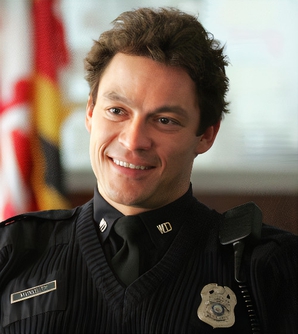
James McNulty is a fictional character and the protagonist of the HBO drama The Wire, played by Dominic West.
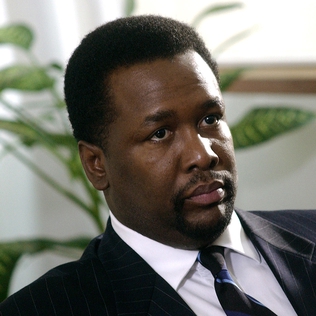
William "Bunk" Moreland is a fictional character in The Wire, played by Wendell Pierce. Bunk's character is based on a retired Baltimore detective named Oscar "The Bunk" Requer. He is portrayed as a generally competent, if profane and curmudgeonly detective. Like his best friend Jimmy McNulty, he also has problems related to infidelity and alcohol abuse, although he is more mindful than McNulty of the department's chain of command.

Jay Landsman is a semi-fictional character on the HBO drama The Wire based upon the real life Baltimore City police officer Jay Landsman. The fictional character of Jay Landsman is portrayed by actor Delaney Williams.
The Baltimore Police Department plays an integral part in The Wire.
Law enforcement is an integral part of the HBO drama series The Wire. The show has numerous characters in this field and their roles range from those enforcing the law at street level up to those setting laws citywide. The Baltimore City Police Department has been explored in detail from street level characters to the upper echelons of command. The show has also examined those setting laws in city politics and touched upon the FBI, the correctional system and the family of police officers.
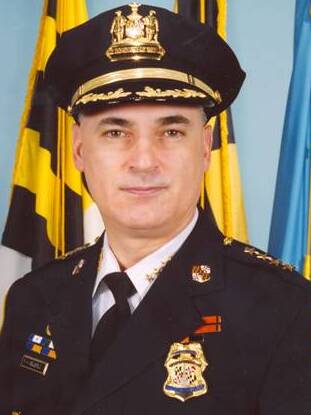
Frederick H. Bealefeld III is an American former police officer who served as commissioner of the Baltimore Police Department from 2007 to 2012. He also served as deputy commissioner of operations for the department from January to July 2007. Born to a family of police officers, Bealefeld graduated from Chesapeake High School in Anne Arundel County, and attended Anne Arundel Community College, dropping out due to an injury preventing him from obtaining a lacrosse scholarship.
The murder of Phylicia Barnes is believed to have occurred in Baltimore, Maryland, United States, on December 28, 2010, in relation to a crime. Her body was recovered in the Susquehanna River on April 20, 2011, following a series of searches and national media coverage from various outlets, including The Today Show. The investigation into her death was ruled a homicide. About a year later, on April 25, 2012, her half-sister's ex-boyfriend, Michael Johnson, was arrested and charged with her murder. At the time, police declined to provide any details as to how the murder occurred, how they identified him as a suspect, or a motive in the case. Johnson was convicted on February 6, 2013, of second-degree murder. However, the conviction was overturned when the trial judge granted the defense's motion for a new trial. Upon commencement of the second trial, all charges against Johnson were dropped on January 20, 2015.
The American city of Baltimore, Maryland, is notorious for its crime rate, which ranks well above the national average. Violent crime spiked in 2015 after the death of Freddie Gray on April 19, 2015, which touched off riots and an increase in murders. The city recorded 348 homicides in 2019, a number second only to the number recorded in 1993 when the population was nearly 125,000 higher.

Larry Donnell "Donnie" Andrews was an American armed robber, murderer, and anti-crime advocate. He was one of the inspirations for the character Omar Little on the HBO series The Wire.
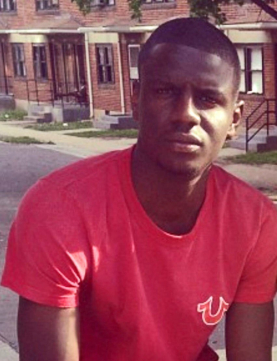
On April 12, 2015, Freddie Carlos Gray Jr., a 25-year-old African American, was arrested by the Baltimore Police Department for possession of a knife. While in police custody, Gray sustained fatal injuries and was taken to the R Adams Cowley Shock Trauma Center. Gray's death on April 19, 2015, was ascribed to injuries to his cervical spinal cord.

We Own This City is an American crime drama miniseries based on the nonfiction book of the same name by Baltimore Sun reporter Justin Fenton. The miniseries was developed by George Pelecanos and David Simon and directed by Reinaldo Marcus Green. The six-episode series premiered on HBO on April 25, 2022.
Justin Fenton is an American author, journalist and crime reporter. He is currently an investigative reporter for the Baltimore Banner.

In the early morning of December 16, 2021, Keona Schannel Holley, a 39-year-old officer with the Baltimore Police Department, and Justin Johnson, a 38-year-old, were fatally shot one and a half hours apart in the Curtis Bay and Yale Heights neighborhoods of Baltimore, respectively. Holley joined the department in 2019, previously being employed at the Clifton T. Perkins Hospital Center, a psychiatric hospital in Jessup, Maryland. The perpetrators were identified as Elliot Knox, a 31-year-old, and Travon Shaw, a 32-year-old. Both perpetrators had previously been imprisoned for armed robbery and Shaw was set to go on trial for a 2020 firearms charge four months after the shooting.
Wayne Earl Jenkins Jr. is a former Baltimore Police Department (BPD) sergeant who was the ringleader of the Gun Trace Task Force (GTTF), a plainclothes unit that engaged in widespread criminal activities while on duty. Jenkins, along with other members of the GTTF, was convicted on federal charges including racketeering, robbery, and overtime fraud in one of the most notorious police corruption scandals in Baltimore's history. He is currently serving a 25-year sentence in federal prison, with a scheduled release in 2037.













